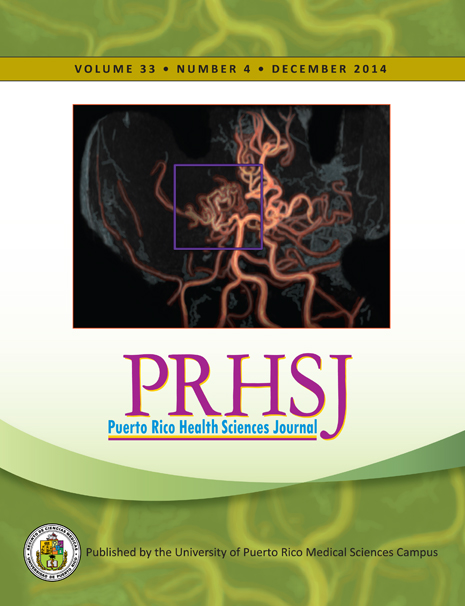Abstract
Objective: To describe the risk factors for infection, complications, treatment received and response in Puerto Ricans with HCV attending gastroenterology clinics at UPR-MSC, and the prevalence of single nucleotide polymorphisms (SNPs) in IFNL3 and IFNL4 in this population. Methods: After consent, demographic and medical data were obtained and blood samples were drawn from each patient. The QIAamp Blood-Maxi Kit was employed for DNA extraction. The TaqMan allelic discrimination assay was employed for SNP genotyping. HCV-RNA was measured by branched-chain DNA assay. Frequency distributions were used to describe the study population and the prevalence of SNPs. The UPR Medical Sciences Campus IRB approved the study. Results: Of 259 patients recruited, 64% were men. Genotype 1 was found in 112/136 (82%). Of 150 subjects treated, 19% had sustained virological response (SVR), 40% received treatment with pegylated interferon plus ribavirin. The SNP frequencies (n = 239) of IFNL3 locus rs12979860 were 27% (C/C), 50% (C/T), and 23% (T/T), and for rs8099917 were 46% (T/T), 47% (T/G), and 7% (G/G). SNP frequencies of IFNL4 locus ss469415590 were 26% (TT/TT), 48% (TT/ΔG), and 26% (ΔG/ΔG). Conclusion: HCV-infected Hispanics in our sample (all of which were Puerto Rican) were shown to have a low SVR rate of 19%. The demographic characteristics were similar to those of other study groups in the US, except for the annual income. Genotype-1 was the most prevalent in those patients with known HCV genotypes. This study group showed significant differences with frequencies observed in other populations. Lower frequencies of the favorable genotypes were found in our group compared with the populations having European and Asian ancestry.
Authors who publish with this journal agree to the following terms:
a. Authors retain copyright and grant the journal right of first publication with the work simultaneously licensed under a Creative Commons Attribution License that allows others to share the work with an acknowledgement of the work's authorship and initial publication in this journal.
b. Authors are able to enter into separate, additional contractual arrangements for the non-exclusive distribution of the journal's published version of the work (e.g., post it to an institutional repository or publish it in a book), with an acknowledgement of its initial publication in this journal.
c. Authors are permitted and encouraged to post their work online (e.g., in institutional repositories or on their website) prior to and during the submission process, as it can lead to productive exchanges, as well as earlier and greater citation of published work (See The Effect of Open Access).
